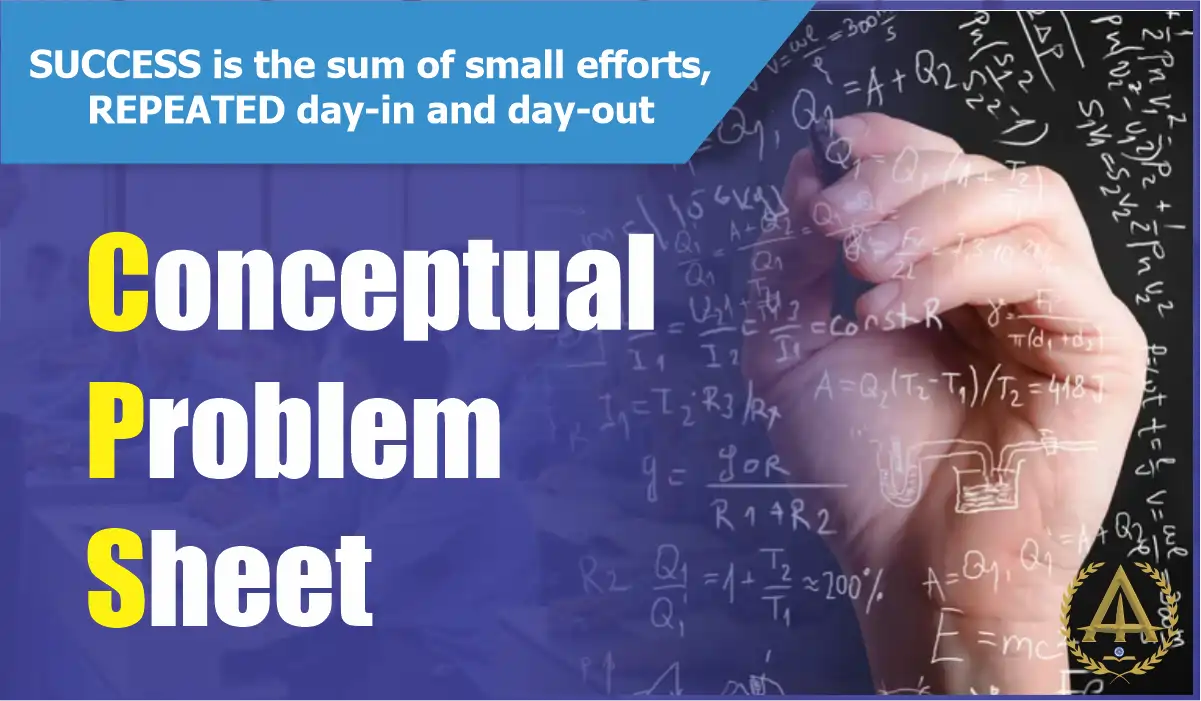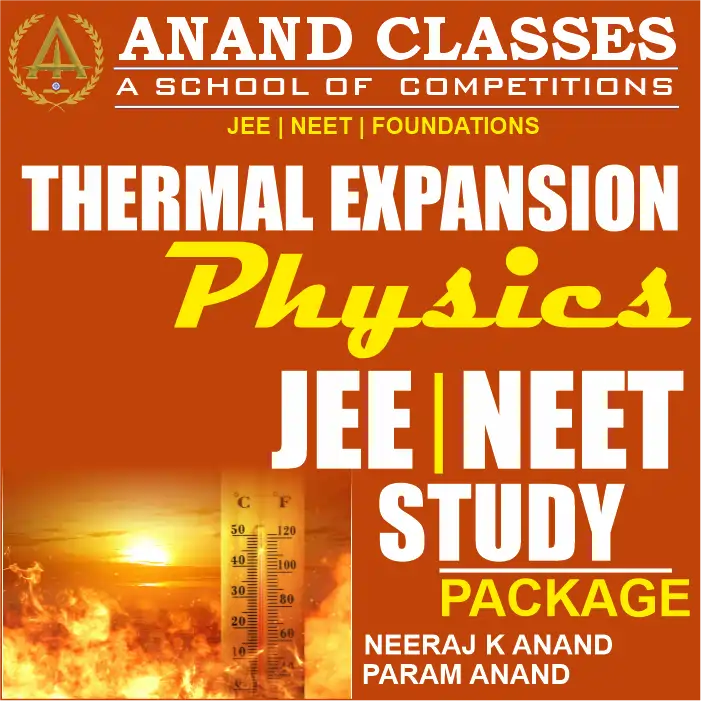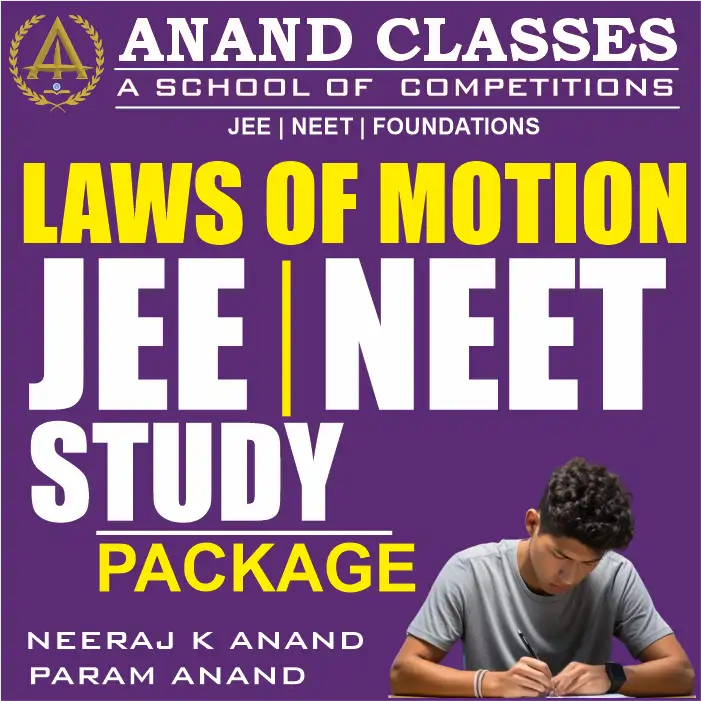Oscillations Notes With JEE NEET MCQS Physics Class 11 CBSE Study Material Full Chapter Download pdf-Anand Classes
Tags :
Class 11 Oscillations, Oscillations in Physics, Simple Harmonic Motion (SHM), Periodic Motion in Class 11, Oscillations and Waves JEE, Oscillatory Motion, Harmonic Oscillator, Angular Frequency in Oscillations, Amplitude in Simple Harmonic Motion, Oscillations Equations, Class 11 Physics Oscillations Notes, Oscillations Important Questions, Classical Mechanics Oscillations, Mechanical Oscillations, Damped Oscillations, Resonance in Oscillations, Pendulum Oscillations, Oscillations and Waves Formulas, Oscillations Problems for JEE, Oscillations and Waves Study Material, Class 11 Physics SHM Examples, Oscillations Online Courses, JEE Main Oscillations Practice, Oscillations Video Lectures Class 11, Free Oscillations Physics, Class 11 Oscillations for JEE, JEE Main Oscillations, NEET Physics Oscillations, Oscillations Questions for JEE, Oscillations in JEE Syllabus, JEE Advanced Oscillations Practice, Oscillations and Waves JEE Notes, JEE Oscillations Important Topics, NEET Physics SHM (Simple Harmonic Motion), Oscillations and Waves NEET Questions, Class 11 Physics NEET Oscillations, NEET Oscillations Formulas, Oscillations Previous Year JEE Papers, NEET Oscillations Study Material, Class 11 Physics Oscillations NEET Revision, Oscillations Practice Problems for JEE and NEET, NEET Oscillations Online Coaching, Oscillations Video Lectures JEE NEET, JEE Main Oscillations Mock Test, NEET Physics Oscillations MCQs, Oscillations and Waves JEE NEET Exam Tips, Free Oscillations Physics JEE, NEET Oscillations Sample Papers, Oscillations Concepts for JEE NEET, JEE Oscillations and Waves Revision Notes
What are Oscillations?
Oscillation is a measure of some repetitive variation, as a function of time. It can be measured with respect to a state of equilibrium. The most common and simplest example of oscillation is the motion of a simple pendulum.
Oscillatory Motion Formula
A motion is said to be oscillatory if it is repetitive in which an object repeats the same movement over and over. In the absence of friction, the body can be in oscillation forever. But in reality, the system settles in the state of equilibrium eventually. Let’s learn the calculation of the frequency of oscillatory motion.
Example: loaded spring, the motion of a pendulum
Here the frequency of the oscillatory motion is calculated by
Where,
f = frequency measured in Hz
one hertz is equal to one oscillation cycle per second
T = time period of motion of waves
Oscillations Notes With JEE NEET MCQS Physics Class 11 CBSE Study Material Full Chapter Download pdf-Anand Classes
What are the three main types of Simple Harmonic Motion?
The three main types of simple harmonic motion in physics are:
- Free Oscillation
- Forced Oscillation
- Damped Oscillations
Free Oscillation
Here, the amplitude and time period remain constant without any influence of external factors. When the system has zero damping, the amplitude remains constant provided, this theory is possible in cases where damping always occurs.
In order to overcome external forces like air resistance or friction, the reduction in amplitude(energy loss of a system) is referred to as damping. As a result, the amplitude, frequency, and energy all remain constant.
Forced Oscillation
When an external periodic force influences a body’s oscillation, then it is called forced oscillation. Here, damping occurs in the amplitude of oscillation but remains constant with the help of the external energy supplied by the system.
For example, constantly pushing a swing so that its oscillation doesn’t reduce.
Damped Oscillation
The reduction of the amplitude of an object with respect to time, such type of oscillations are known as damped oscillations. The energy of a system decreases with the decrease in amplitude. There are two types of damping:
- Natural Damping
- Artificial Damping
Resonance
It is the phenomenon wherein an external vibrating system causes the oscillation of another system with a higher amplitude at a particular frequency. The frequency at that particular resonance level is known as a resonant frequency. For instance, when tuning a guitar with the help of another guitar, the resonant frequency can be observed. In this case, the amplitude of the vibration of the string is the highest. The reason for large amplitude oscillations generated at that resonant frequencies are as a result of vibrational energy that is accumulated in the system. Resonance is of the following types:
- Mechanical
- Acoustic
- Orbital
- Particle
- Electrical
- Optical Resonance
Oscillations Notes With JEE NEET MCQS Physics Class 11 CBSE Study Material Full Chapter Download pdf-Anand Classes
Energy in Simple Harmonic Motion
Oscillations are repetitive variations that are periodic. Oscillations are measured about a point of equilibrium, also known as central value or between two or more different states. Repeating variations of any quantity or measure about its equilibrium value in time is defined as oscillation. Oscillations also occur in dynamic systems or, more accurately, in every field of science.
Example: The movement of a simple pendulum in a clock.
Simple Harmonic Motion or SHM is defined as a motion in which the restoring force is directly proportional to the displacement of the body from its mean position. SHM is a special case of oscillation in which motion takes place along a straight line between the two extreme points. A restoring force is seen directed towards the mean position or towards the equilibrium position in SHM. The mean position in simple harmonic motion is a stable equilibrium.
Note: All the SHM are oscillatory and periodic.
Every oscillatory motion is not a simple harmonic motion.
We can note there involves a continuous interchange of potential and kinetic energy in a simple harmonic motion. The system that performs simple harmonic motion is called the harmonic oscillator.
Case 1: The potential energy is zero, and the kinetic energy is maximum at the equilibrium point where zero displacement takes place.
Case 2: The potential energy is maximum, and the kinetic energy is zero, at a maximum displacement point from the equilibrium point.
Case 3: The motion of the oscillating body has different values of potential and kinetic energy at other points.
Oscillations Notes With JEE NEET MCQS Physics Class 11 CBSE Study Material Full Chapter Download pdf-Anand Classes
Frequently Asked Questions on CBSE Class 11 Physics Notes Chapter Oscillations
What is the meaning of oscillatory motion?
A motion repeating itself is referred to as periodic or oscillatory motion.
What is resonance?
Resonance describes the phenomenon of increased amplitude that occurs when the frequency of a periodically applied force is equal or close to the natural frequency of the system on which it acts.
What is acoustic sound?
Acoustics is the science related to the production, control, transmission, reception and effects of sound.
Short Notes of Chapter Oscillations Class 11 Physics download pdf free
Tags :
oscillations notes pdf, oscillations notes class 11 pdf, oscillations notes, oscillation notes for neet, oscillation notes for neet pdf, oscillation notes for jee, biological oscillations notes pdf, oscillations handwritten notes, waves and oscillations notes b.sc pdf, why is oscillation important, oscillations notes class 11 pdf, oscillations notes class 12, oscillations notes class 11, oscillation chapter notes pdf, why is oscillation important, what is oscillation of a simple pendulum, waves and oscillations notes b.sc pdf, biological oscillations notes pdf, why is oscillation important, what is oscillation and its types, what is oscillation in physics, what is sound oscillation, oscillations jee notes, oscillations class 11 jee notes, why is oscillation important, examples of oscillations in real life, 20 examples of oscillatory motion, is simple harmonic motion oscillatory, oscillation notes in hindi


































